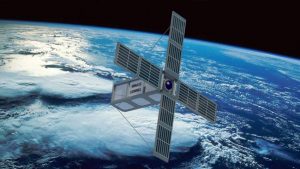A small team of about fifty students at the The University of Massachusetts at Lowell have been given a $200,000 grant from NASA to construct their own space orbiting satellite. The satellite is expected to launch some time in 2018.
The fifty or so engineering and science student at UMass Lowell have been working on a design for their satellite that they call SPACE HUAC (pronounced by them as Space Hawk in honor of the school’s nickname which is the River Hawks) and will be able to complete it and see it launched thanks to the NASA donation and eventual assistance. The satellite will be sent out to orbit Earth for about a year and NASA hopes the satellite will be able to collect and send back data to them more quickly than current satellites are already doing.
Administrators at UMass Lowell are pleased that NASA has seen fit to fund and oversee the project as they believe that the project is viable as well as a superb training opportunity for the students. NASA expects the student’s new satellite to take photos of the sun and send them back to them. They are all hopeful that the satellite will be able to transmit data and information at speeds of up to 100 megabits per second. Those speeds, between 50-100 megabits per second, are much faster than anything the space agency is currently using out there.
It will be an extremely tiny satellite as satellites go. It will only be about twelve inches in length and weigh a mere nine pounds. While orbiting Earth, the satellite will be able to maneuver and move between 99 miles and 1,200 miles above the planet. It will be able to reach a top speed of 17,000 miles per hour and will make a complete orbit of Earth in about an hour and a half. The SPACEHAUC will use four solar panels to generate the energy it needs to complete its mission.
PHOTO CREDIT: UMass Lowell

